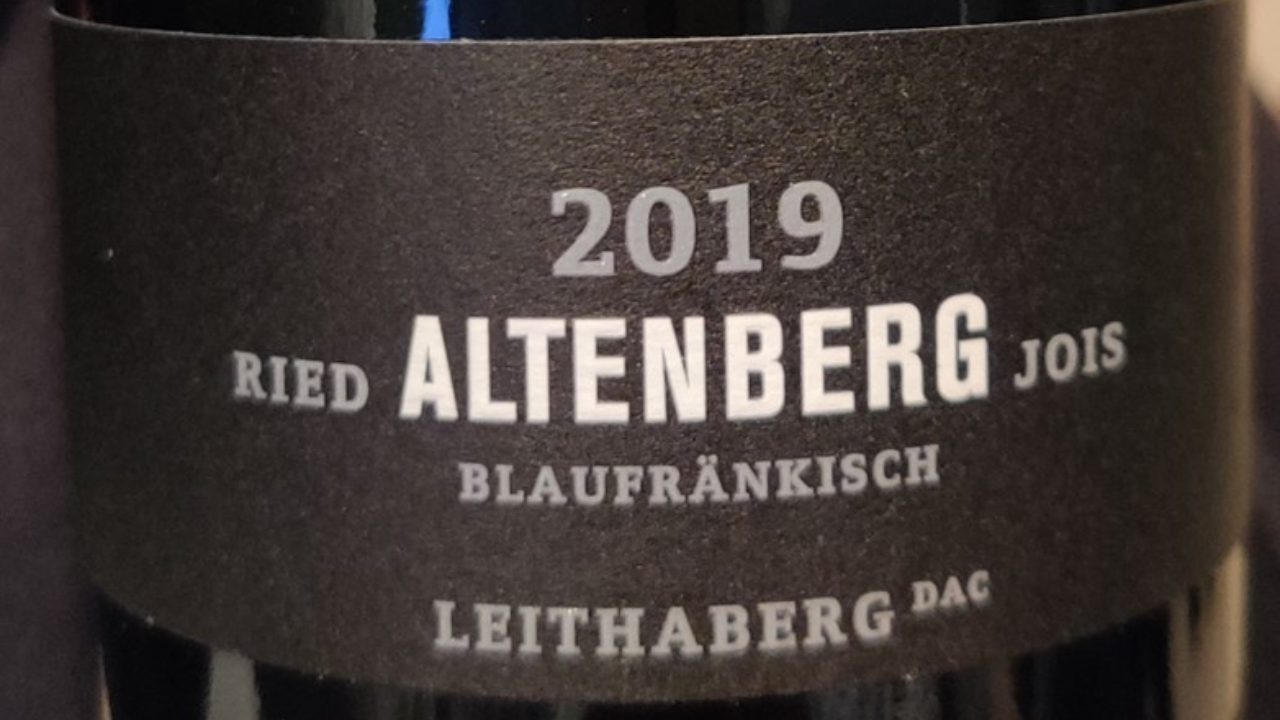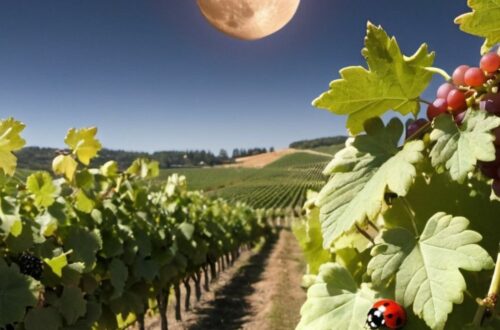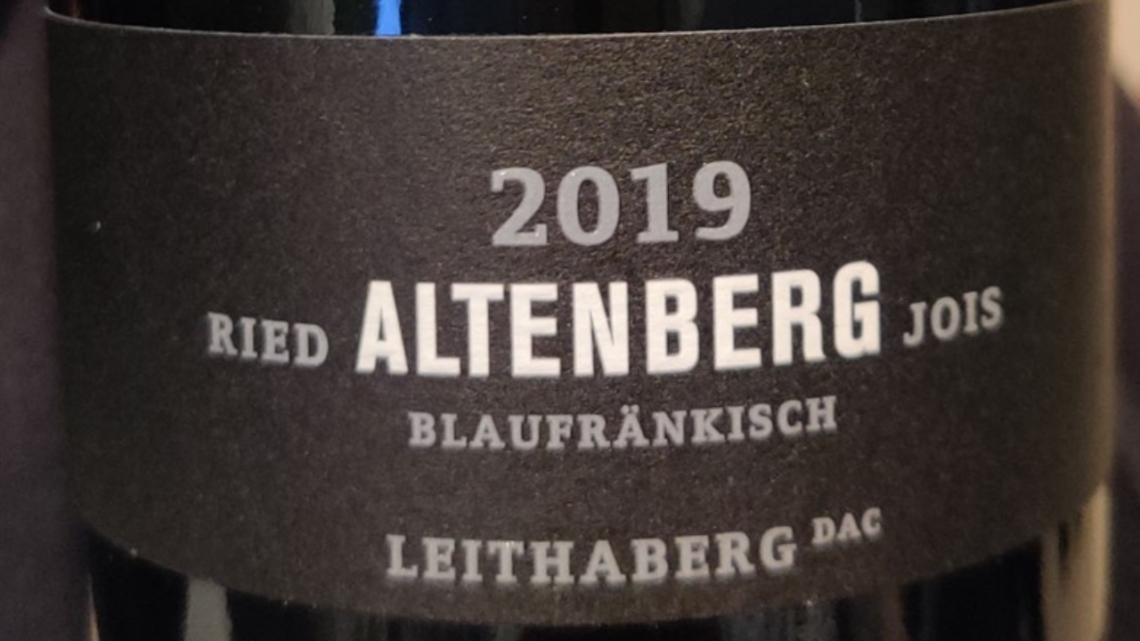
Understanding Blaufränkisch Labels From Burgenland
Today’s your turn to pick out the wine. And here comes the stress… How will you ever choose? Okey you already know you’re going for a Blaufränkisch wine from Burgenland but now, which wine to choose?
Indeed, Blaufränkisch is very terroir driven so depending on where it comes from in Burgenland and which producer it comes from, it can different have a different taste.
And you wouldn’t want to get it all wrong by picking a light-bodied Blaufränkisch when you actually were looking for a full-bodied Blaufränkisch.
Luckily I got you covered and you won’t need an app or all, you’ll just have to read the label. And no, you don’t need to speak German, you only need to on the lookout for a few words.
For those who aren’t into Blaufränkisch, these tricks and tips also apply for other wines.
So let’s get into it and let me help you understand Blaufränkisch labels from Burgenland!
Blaufränkisch can be a bit of a mystery! It changes its personality depending on where it’s grown and how the winemaker works its magic. Generally, you’ll get a full-bodied wine with a nice kick of acidity and tannins. But to get more specific, you gotta become a label detective! It tells you everything from the grape’s origin story (where it grew up!) to its age (vintage year). You’ll also find the name of the winemaker and how strong it is (alcohol content). Some labels even have tasting notes, like a little cheat sheet for your taste buds. Don’t worry, it’s not Shakespeare (usually!), but it’ll give you hints about what to expect in your glass. Look for keywords that describe the style of Blaufränkisch you’re holding. Understanding the Austrian classification adds another layer of knowledge. Qualitätswein is your basic good stuff. Kabinett is a lighter style, while DAC tells you the wine comes from a specific region. Then there’s Prädikatswein, the category for sweet wines.
- Demystifying Blaufränkisch
- Key Information on Blaufränkisch Labels
- Understanding Burgenland’s Wine Classification Systems
- Vineyard Designations and Terroir
- Decoding Blaufränkisch Styles
- Reading Tasting Notes on Labels
- The Art of Blaufränkisch Label Design
- Conclusion : Understanding Blaufränkisch labels from Burgenland
Demystifying Blaufränkisch
Blaufränkisch, a red grape variety ,is renowned for its diverse flavor range. It can span from dark and fruity to spicy and earthy, with variations influenced by the specific growing region and the winemaker’s style.
However, regardless of these nuances, all Blaufränkisch wines share common traits—they are typically full-bodied, boast moderate to high acidity, and feature moderate to high tannins.
In terms of tasting profile, Blaufränkisch presents a unique blend reminiscent of northern Rhône Syrah, Nebbiolo from Italy’s Piedmont, and Red Burgundy Pinot Noir.
But let’s get back to our core question.
If you want to know more about Blaufränkisch and its unique characteristics, to know if that’s what you’re looking for, check out this blog post
Key Information on Blaufränkisch Labels
While Blaufränkisch labels may seem intimidating at first glance, it’ms easier than you think.
Origin
The most important information on a Blaufränkisch label is the origin, typically indicated by the Burgenland region or specific sub-regions within Burgenland.
For instance, “DAC Leithaberg” denotes a wine produced in the Leithaberg region, known for its elegant and refined Blaufränkisch wines.
Vintage
The vintage refers to the year the grapes were harvested.
This information is crucial for understanding the wine’s maturity and style. Wines from warmer vintages typically exhibit riper flavors, while those from cooler years may have more pronounced acidity and freshness.
Sign up to my newsletter to have your very own cheat sheet of the best wine vintages of Austria.
Vineyard Designation
Vineyard designation indicates the specific vineyard where the grapes were grown.
This information provides insight into the terroir, or the unique characteristics of the soil, climate, and topography that influence the wine’s flavor profile.
We’ll come back to this point.
Understand the impact of climate on wine and the impact of soil on wine, and more specifically on Blaufränkisch, and check out where the vineyard is located. You’ll be able to guess how the wine might taste.
Winery Name
The winery name identifies the producer of the wine. This information allows you to explore the winery’s reputation, philosophy, and winemaking style.
So how can you choose? Well I would suggest reading my blog posts on every region where I feature my favourite wineries and you’ll get insights on how they make their wines.
You can also search through the search bar. Type in the winemaker you’ll looking for and you’ll be redirected to all the blog posts where I mention it.
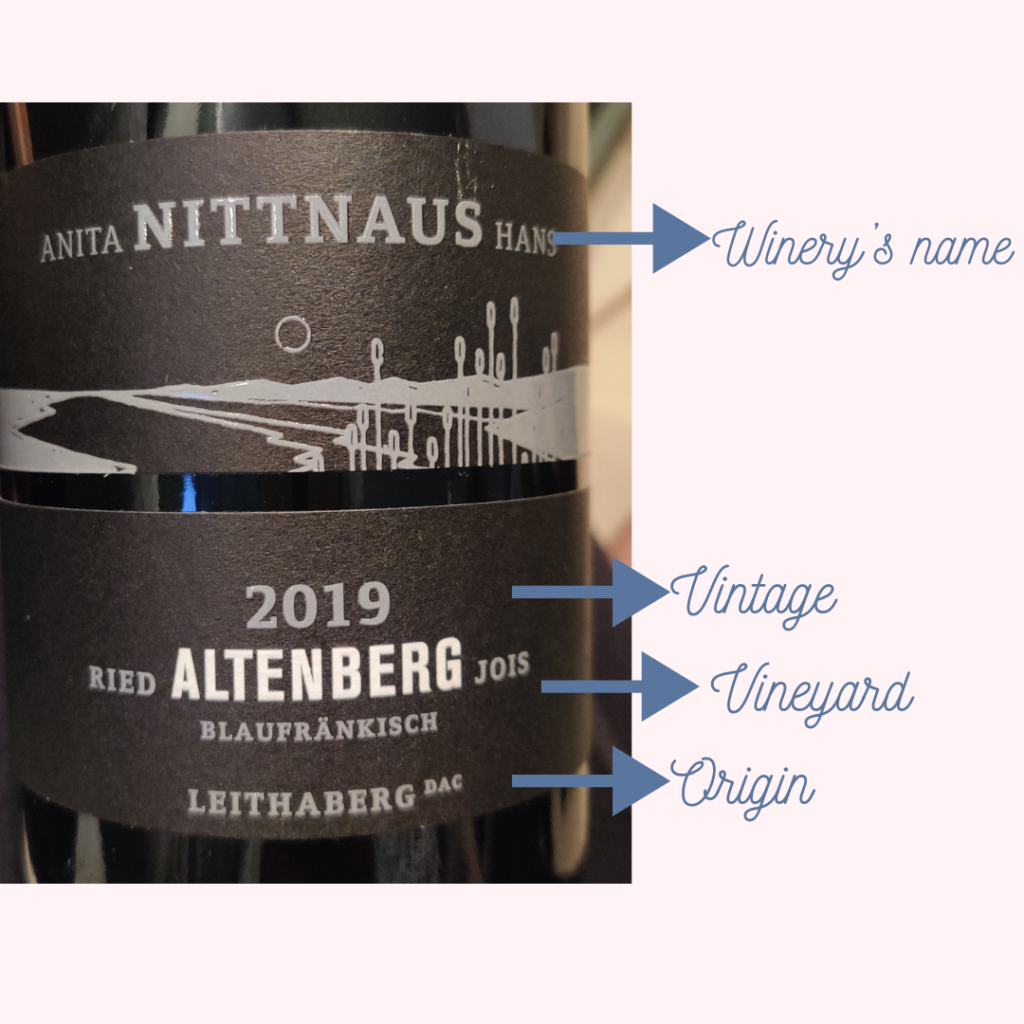
Alcohol Content
The alcohol content is usually expressed as a percentage of alcohol by volume (ABV). This information provides an indication of the wine’s strength and potential for aging.
Prädikatswein
Austrian wine is classified into various quality levels to provide consumers with information about the wine’s origin, production methods, and quality. The major quality categories are Qualitätswein, Kabinettwine, DAC, and Prädikatswein.
Specific Prädikatswein Terms
Certain terms may be used to further specify the style of the wine:
- Trocken: Dry
- Halbtrocken: Semi-dry
- Süss: Sweet
- Reserve: A reserve wine must be aged for at least 12 months, or 18 months for red wines.
- Selektion: A selection wine represents the best grapes from a particular vineyard or vintage.
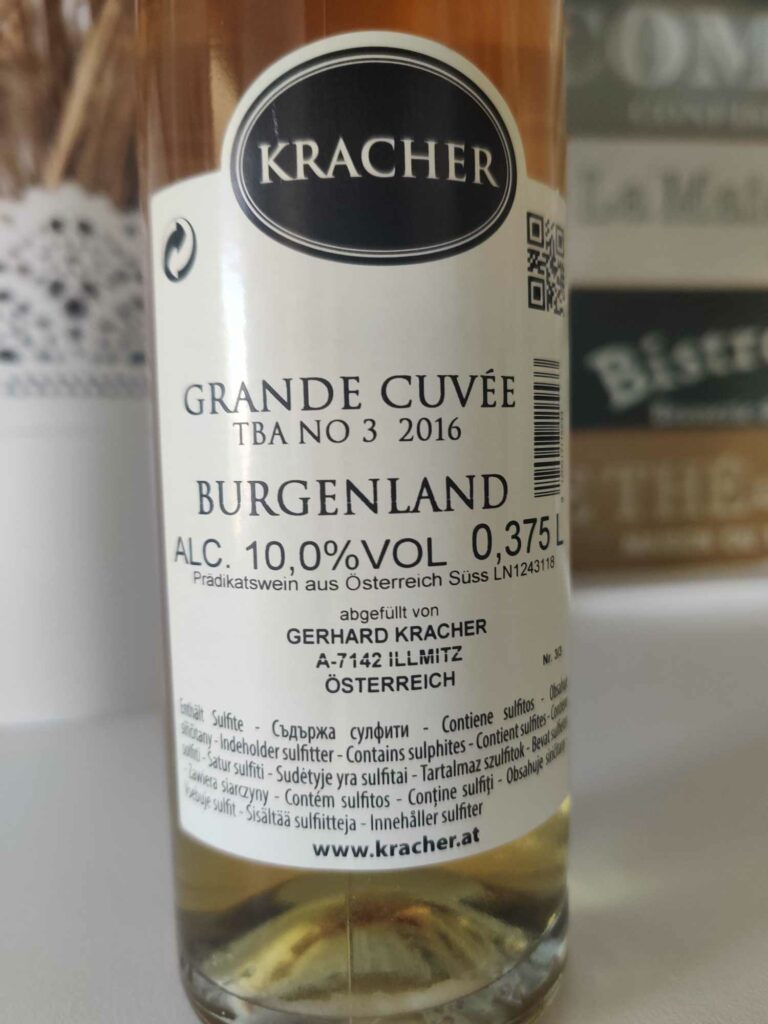
Understanding Burgenland’s Wine Classification Systems
Austrian wine is classified into various quality levels to ensure consistency and provide consumers with clear information about the wine’s origin, production methods, and quality.
Here’s an overview of the major quality categories:
Qualitätswein (Quality Wine)
Qualitätswein represents the base level of Austrian wine quality. To be classified as Qualitätswein, a wine must be produced exclusively from grapes harvested in a specific Austrian wine-growing region.
It must adhere to strict regulations regarding grape variety requirements, must density, sensory evaluation, and alcohol content.
Qualitätswein wines undergo rigorous state control and are identified by a distinctive red-white-red banderole around the bottleneck.
Kabinettwine
A subset of Qualitätswein wines can be classified as Kabinett or Kabinettwein. These wines meet specific criteria, including a minimum must density of 17°KMW, no enrichment, a maximum unfermented sugar content of 9 g/l, and a maximum total alcohol content of 12.9% vol.
Kabinett wines are known for their lighter body and fruity, refreshing character.
DAC (Districtus Austriae Controllatus)
DAC, an acronym for Districtus Austriae Controllatus, represents a higher quality level within Qualitätswein.
To be designated as DAC, a wine must meet specific conditions defined by the National Committee upon the Minister of Agriculture’s order. DAC wines must exemplify the typical characteristics of their designated region and adhere to strict regulations regarding grape varieties, production methods, and quality standards.
The DAC designation is accompanied by the respective defined area according to the ordinance.
Prädikatswein
Prädikatswein, meaning “predicate wine,” is a special category within Qualitätswein. These wines are distinguished by their exceptional maturity and harvest methods, resulting in higher sugar content compared to Qualitätswein wines.
Prädikatswein wines can be labeled with generic origins (e.g., “Burgenland”) or specific origins (e.g., “Wagram”).
The Prädikatswein system further classifies wines into various levels, including Spätlese, Auslese, Beerenauslese, Eiswein, Strohwein/Schilfwein, and Trockenbeerenauslese.
Each level has its own specific criteria regarding must density, grape selection, and production methods. Prädikatswein wines are renowned for their exquisite quality, complex flavors, and exceptional aging potential.
These quality levels provide a comprehensive framework for classifying and labeling Austrian wines, ensuring that consumers can make informed choices based on the wine’s origin, production methods, and quality assurance.
Vineyard Designations and Terroir
In Burgenland, the significance of vineyard designations on Blaufränkisch labels cannot be overstated.
Burgenland a very diverse terroir and thus the taste in Blaufränkisch wines can vary a lot.
For instance, limestone soils will impart minerality and acidity, while clay soils yield fuller-bodied expressions. Sandy soils, on the other hand, produce lighter-bodied wines adorned with vibrant red fruit flavors.
The climate in Burgenland mirrors its soil diversity.
The northern vineyards are cooler with a shorter growing season, while the southern ones bask in warmth, extending the growing season.
Altitude further contributes. With higher altitudes comes wines of heightened acidity and delicate nuances, and lower altitudes deliver wines with lower acidity and ripe fruit richness.
The aspect of the vineyard, the direction it faces, adds another layer to the Blaufränkisch narrative.
Southern exposures forth wines that are warm and fruit-forward, meanwhile, northern exposures forth cooler wines, marked by heightened acidity and a refreshing character.
If you really start to understand the terroir part, you’ll be able to choose the perfect Blaufränkisch wine to your palate.
Decoding Blaufränkisch Styles
As we just saw, Blaufränkisch comes in a lot of different styles, ranging from light and fruity to bold and robust. This not only comes from the terroir (soil and climate) but also through winemaking techniques.
Notably, the choice between whole-cluster fermentation and destemming significantly influences Blaufränkisch’s character.
Wines subjected to whole-cluster fermentation lean towards a structured and tannic profile, while those from destemmed grapes show a more fruit-forward and approachable nature.
Maceration, a pivotal winemaking process involving grape skin soaking in the juice, adds another layer. Extended maceration yields wines with bold and robust flavors, while shorter durations result in wines with light and fruity nuances.
For instance:
For light and fruit expression
- Heinrich Winery, located in the Neusiedlersee region of Burgenland, produces a light and fruity expression of Blaufränkisch. Their Blaufränkisch often exhibits bright red fruit flavors such as cherry and raspberry, with a lively acidity and soft tannins. These wines are typically approachable and versatile, suitable for everyday enjoyment.
- Feiler-Artinger, situated in Rust, is another producer known for crafting light and fruity Blaufränkisch wines. Their Blaufränkisch wines often feature red berry aromas, hints of spice, and a crisp acidity. These wines are known for their elegance and easy-drinking nature, making them perfect for casual gatherings or pairing with a variety of dishes.
- Krutzler Winery, located in the Eisenberg region, produces Blaufränkisch wines that showcase the terroir-driven character of the area while maintaining a light and fruity profile. Their Blaufränkisch wines often display vibrant red fruit flavors, subtle earthy notes, and a refreshing acidity. These wines are well-balanced and expressive, reflecting the unique characteristics of the Eisenberg region.
For bold and robust wines
- Gernot Heinrich, located in the Neusiedlersee region, produces a bold and robust expression of Blaufränkisch from their Alter Berg vineyard. This wine typically features concentrated dark fruit flavors such as blackberry and plum, along with notes of baking spices, dark chocolate, and tobacco. It has a full-bodied palate with firm, grippy tannins and a long, lingering finish.
- Prieler Winery, situated in the Leithaberg region, is known for crafting bold and robust Blaufränkisch wines from their Goldberg vineyard. These wines are characterized by their intense aromas of ripe black fruits, such as black cherry and blackberry, complemented by hints of vanilla, leather, and dried herbs. They have a rich, velvety texture, with well-integrated tannins and a complex, layered palate.
- Uwe Schiefer, located in the Eisenberg region, produces a bold and robust expression of Blaufränkisch from their Hochäcker vineyard. This wine typically exhibits deep purple color and intense aromas of black fruits, such as plum and blackberry, with underlying notes of graphite, black pepper, and smoky oak. It has a powerful structure, with firm, chewy tannins and a long, persistent finish.
Elegant and refined choices
- Weninger, located in the Mittelburgenland region, is known for producing elegant and refined expressions of Blaufränkisch from their Hochäcker vineyard. These wines typically exhibit aromas of red and black fruits, such as cherry and blackberry, along with hints of floral notes, dried herbs, and earthy undertones. They have a silky texture, fine-grained tannins, and a long, harmonious finish.
- Krutzler Winery, situated in the Eisenberg region, crafts elegant and refined Blaufränkisch wines from their Perwolff vineyard. These wines are characterized by their purity of fruit, with flavors of ripe red berries, plum, and raspberry, complemented by nuances of spice, mineral, and subtle oak. They have a polished texture, supple tannins, and a lingering, nuanced finish.
- Paul Achs, a leading winemaker in Burgenland, produces elegant and refined Blaufränkisch wines from the Ungerberg vineyard. These wines are known for their finesse and precision, with aromas of cherry, cranberry, and violet, layered with notes of cedar, tobacco, and black pepper. They have a graceful palate, with velvety tannins, bright acidity, and a long, expressive finish.
Reading Tasting Notes on Labels
To help consumers understand the nuances of these wines, winemakers often include tasting notes on the labels.
While these notes can be intimidating at first glance, learning to interpret them can help you choose your wine..
Tasting notes are descriptive phrases used to convey the sensory experiences of a wine. They typically encompass three main aspects: aroma, taste, and finish.
Aroma refers to the scents perceived when the wine is swirled in the glass, while taste encompasses the flavors detected on the palate.
Finish refers to the lingering sensations left on the palate after the wine has been swallowed.
Common descriptors used to describe Blaufränkisch wines include:
- Red and black fruits: These terms suggest flavors of cherry, plum, raspberry, blackberry, or black currant.
- Spice: This descriptor encompasses a range of spices, such as pepper, clove, licorice, or cinnamon.
- Earthy and mineral: These terms indicate flavors reminiscent of soil, rocks, or graphite.
- Herbaceous: This descriptor suggests flavors of herbs, such as mint, eucalyptus, or oregano.
- Floral: This term indicates flavors of flowers, such as rose, violet, or lavender.
By understanding these common descriptors, you can begin to interpret tasting notes and gain a better understanding of the wine’s flavor profile.
However, these notes are often a poetic language of their own. Look for descriptors like “black cherry” to anticipate a burst of rich, dark fruit flavors.
“Peppery” hints suggest a subtle spice that can add complexity to the taste.
When notes mention “minerality,” envision the influence of the soil, perhaps limestone-rich, contributing to a crisp and vibrant profile.
“Silky tannins” indicate a smooth texture, while “bold and robust” signals a more intense, full-bodied experience.
For those seeking elegance, terms like “refined” and “nuanced” point to a sophisticated and well-balanced wine.
For instance, a wine described as having “aromas of ripe black plum and blackberry, with hints of pepper and spice” suggests a full-bodied wine with rich fruit flavors and a touch of complexity.
Tasting notes are not an exact science, as individual perceptions of aroma and flavor can vary.
The Art of Blaufränkisch Label Design
Are you into art?
I’m not really but I assisted to a full presentation one time I was buying wine at my local wine shop as how the graphics on the label is really the “key to the winemaker’s philosophy and how you can guess the taste of the wine by looking at the label”
So I took a few notes and I thought I should share it with you.
Traditional Elements
Traditional motifs, such as folk patterns, grapevine imagery, and depictions of the Burgenland landscape, are often incorporated into Blaufränkisch label designs.
These elements connect the wine to its terroir, evoking a sense of place and authenticity.
The features you may come accross are :
- Classic, script-style fonts.
- Earthy color palette with deep reds, browns, and greens.
- Imagery of vineyard landscapes, traditional winemaking tools, or regional symbols.
- Emphasis on heritage and the longstanding history of Blaufränkisch in the region.
For example Weingut Claus Preisinger Blaufränkisch Classic labels usually have classic, script-style fonts.
The Blaufränkisch Pannobile has a label featuring a painting of the Neusiedlersee, a UNESCO World Heritage Site and a prominent feature of the Burgenland landscape.
Modern Aesthetics
In recent years, Blaufränkisch label design has embraced modern aesthetics, incorporating contemporary typography, abstract patterns, and bold color palettes.
These designs reflect the innovative spirit of Burgenland’s winemakers and their desire to engage with a younger generation of consumers.
It commonly features :
- Clean, sans-serif fonts with a modern aesthetic.
- Minimalist design with a focus on simplicity.
- Innovative use of negative space and contemporary graphics.
- Subdued color palette with perhaps a pop of a single vibrant color for emphasis.
Weingut Alois Kracher Blaufränkisch Leithaberg DAC Reserve, with its minimalist design and its yellow circle with “Kracher” writtent in sans-serif font is a perfect example.
The Weingut Nittnaus Blaufränkisch Reserve Leithaberg DAC (2022) has a label featuring an abstract pattern of geometric shapes, reflecting the wine’s complexity and multi-layered character.
Design Elements as Clues
The visual elements of a Blaufränkisch label can provide valuable insights into the wine’s character.
It can feature :
- avant-garde artwork or abstract illustrations
- bold, unconventional typography
- use of vibrant and non-traditional colors
- unconventional label materials, perhaps with texture or interactive elements.
For instance, a label featuring bold, vibrant colors may suggest a wine with a rich, full-bodied profile, while a label with delicate, understated design may hint at a more elegant, lighter-bodied wine.
One example is the label on Weingut Pittnauer Blaufränkisch Exclusive with its vibrant red color on the label.
These examples aim to illustrate how the visual elements of the label can align with the traditional, modern, or experimental styles, providing consumers with visual cues about the winemaker’s approach and the wine’s character.
Well, it all depends on your sensitivity to art I guess. Although, I do have this one friend who insists on buying the wine with the prettiest label. Marketing really works!
Conclusion : Understanding Blaufränkisch labels from Burgenland
So, all in all : Blaufränkisch is largely influenced by its growing region and winemkaing style. Its common traits include full-bodied nature, moderate to high acidity, and moderate to high tannins.
But if you’re looking for something more specific, you’ll going to have to actually read the label.
Indeed, Blaufränkisch labels contain key information such as origin, vintage, vineyard designation, winery name, alcohol content, and Prädikatswein classification.
On some wines, you’ll also find tasting notes on labels help consumers understand Blaufränkisch’s complex character. Okey, it might seem like poetry sometimes, but it contains keywords which will help you find out which type of Blaufränkisch that bottle contains.
Labels may feature traditional, modern, or experimental designs, providing visual cues about the winemaker’s approach and the wine’s character.
Traditional labels incorporate folk patterns and earthy colors, while modern ones embrace contemporary typography and minimalist design. Design elements serve as clues about the wine’s style, such as vibrant colors indicating a full-bodied profile.
Understanding Austrian wine classifications, including Qualitätswein, Kabinettwine, DAC, and Prädikatswein, adds another layer of knowledge. Prädikatswein wines, distinguished by exceptional maturity and harvest methods, are classified into levels like Spätlese, Auslese, Beerenauslese, Eiswein, Strohwein/Schilfwein, and Trockenbeerenauslese.
So, now the important question is : what wine will you choose? Let me know in the comments!
Looking where to buy Austrian wine online? Check out this post!




